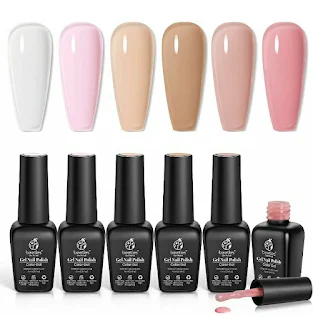Nail polish is a cosmetic product used to enhance the appearance of fingernails and toenails.
Composition: Nail polish typically consists of a mix of solvents, pigments, and polymers. The solvents allow the polish to be applied easily, the pigments provide color, and the polymers help it adhere to the nail.
Types:
Base Coat: Applied before colored polish, it helps protect the nail and promotes even color application.
Colored Polish: Available in a wide range of colors and finishes (e.g., matte, glossy, glitter).
Top Coat: Applied over colored polish to seal and protect it, enhancing shine and durability.
Application: Apply nail polish in thin, even coats. Start with a base coat, followed by 2-3 coats of colored polish, and finish with a top coat. Allow each coat to dry before applying the next.
Drying: Nail polish can air dry, but you can use a nail dryer to speed up the process. Avoid smudging your nails until they are completely dry.
Removal: Use nail polish remover, typically containing acetone or non-acetone formulas, to remove polish. Soak a cotton ball, press it onto the nail, and wipe away the polish.
Nail Health: Nail polish can sometimes weaken nails. Give your nails breaks between manicures to let them breathe and stay healthy.
Longevity: The durability of nail polish varies. High-quality brands tend to last longer without chipping.
Nail Art: Nail polish can be used for intricate nail art designs, like French manicures, nail decals, and nail stamping.
Nail Trends: Nail polish trends change over time, with new colors and techniques constantly emerging.
Health Considerations: Some nail polishes may contain chemicals like formaldehyde, toluene, and dibutyl phthalate (DBP). Look for "3-free" or "5-free" polishes, which are free of some or all of these potentially harmful ingredients.
Storage: Store nail polish in a cool, dry place away from direct sunlight to prevent it from thickening or drying out.
Nail Care: Besides polish, maintaining healthy nails involves a balanced diet, proper hydration, and gentle filing to prevent splitting and breakage.
Nail Polish Brands: Numerous brands offer nail polish, ranging from budget-friendly options to high-end designer choices.
Nail Polish Removers: There are various types of nail polish removers, including acetone-based and non-acetone options. Choose one that suits your needs.
Nail Salons: Many people prefer getting their nails done at professional nail salons, where trained technicians can provide a variety of nail services.
Pros and Cons of the Nail Polish
Tips for minimizing the risks associated with nail polish use:
- Choose a non-toxic nail polish whenever possible.
- Apply a base coat before applying color polish. This will help to protect your nails from the harsh chemicals in the color polish.
- Remove your nail polish regularly, especially if you are using gel polish.
- Use a gentle nail polish remover to avoid damaging your nails.
- If you have any concerns about the use of nail polish, be sure to talk to your doctor or dermatologist.
Remember that nail polish is a fun and creative way to express your style, but it's essential to prioritize nail health and choose products that align with your preferences and values.




